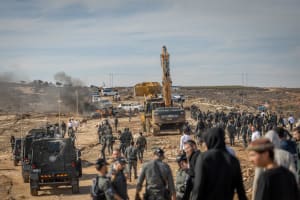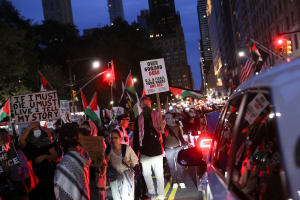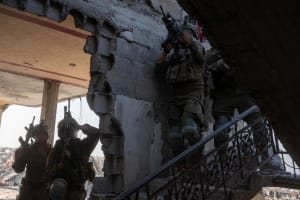New evidence for why King Josiah went to meet Pharaoh Necho in Megiddo
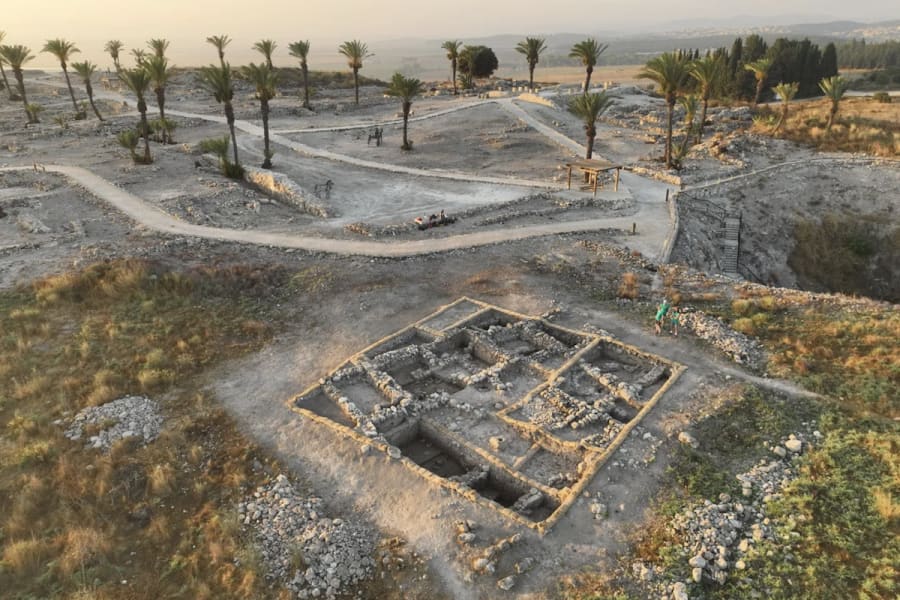
“And I will pour out on the house of David and the inhabitants of Jerusalem a spirit of grace and supplication. They will look on me, the one they have pierced, and they will mourn for him as one mourns for an only child, and grieve bitterly for him as one grieves for a firstborn son” (Zech 12:10).
This verse that is so familiar to us describes the sorrow and regret that will be the lot of the Jewish people after the terrible war that will befall them in the last days, and will claim the lives of so many. But the mourning will increase even more when they all know what their part was in the crucifixion of the Messiah.
John alludes to this verse at the beginning of the Book of Revelation: "Behold, he comes with the clouds, and every eye will see him, even those who pierced him, and all the tribes of the earth will wail because of him" (Revelation 1:7).
When Zechariah wrote the prophecy, he commemorated a traumatic event that the Jewish people had experienced and was remembered in the collective memory from the time of one of the last kings of Judah - Josiah.
If we read the following verse in the prophecy, we understand the context: “On that day the weeping in Jerusalem will be as great as the weeping of Hadad Rimmon in the plain of Megiddo” (Zechariah 12:11).
Verse 11 reminds the audience of a historical event of national mourning in the valley of Megiddo. Most Jewish and non-Jewish commentators agree that the grieving mentioned is for the untimely death of King Josiah in Megiddo. When the prophet Zechariah prophesied about a terrible future event, the immediate comparison is to the death of the king beloved by the people and by God.
The Book of 2 Kings describes the event in which the king was killed:
“While Josiah was king, Pharaoh Necho king of Egypt went up to the Euphrates River to help the king of Assyria. King Josiah marched out to meet him in battle, but Necho faced him and killed him at Megiddo” (2 Kings 23:29.
Many commentators have tried to explain what motivated Josiah to go out to meet the king of Egypt. What Pharaoh Necho did at Megiddo is known. He went to help the Assyrians, his allies, in their war with the Babylonians, who were the rising power in Mesopotamia. The march of Necho to the north dates to 609 BC. We know these facts from extra-biblical sources and the Bible itself. Jeremiah prophesied against Pharaoh Necho, who went to Carchemish on the Euphrates River and was defeated there by Nebuchadnezzar, the Babylonian (Jeremiah 40:2). Megiddo was always an important station on the road from Egypt to the Euphrates River, so Pharaoh Necho had to pass through there.
During a war between great powers, the king of small Judah went out and tried to intervene in a way not clear to us, to influence the outcome of a battle. What was he trying to achieve? What motivated him? Why did he fail in his mission? Those are all questions for which we do not know the answer. 2 Chronicles 35:2-23 adds more details about the incident regarding Josiah's intention and the reaction of the king of Egypt: Josiah went to fight the king of Egypt, the king warned him to stay out, but Josiah wouldn’t listen and therefore Necho killed him.
A recent article in The Scandinavian Journal of the Old Testament reveals new findings discovered at Tel Megiddo concerning the story described above. The excavation uncovered Egyptian and Greek pottery fragments from the 7th century B.C., the time of King Josiah, within a new area named X.
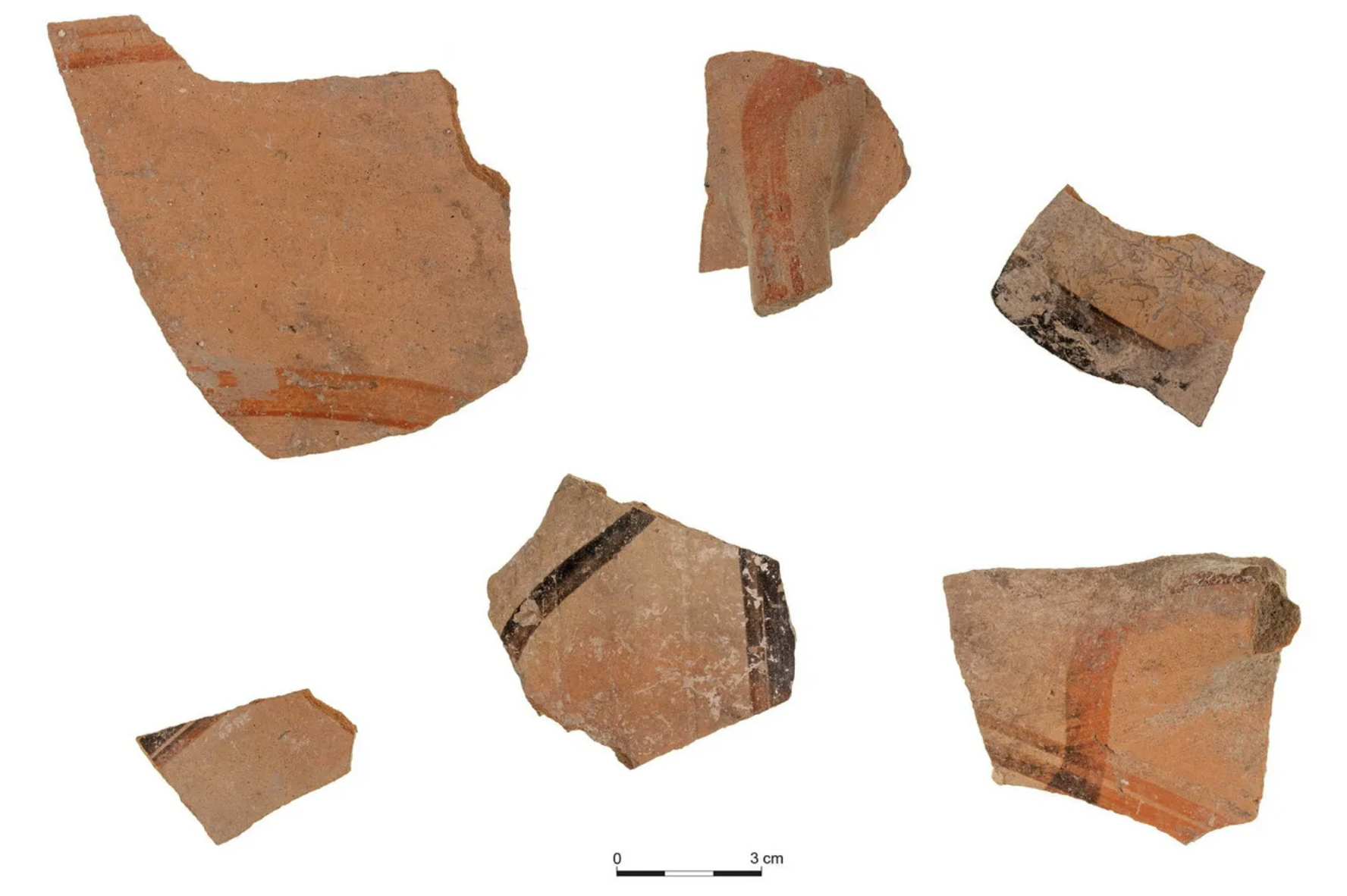
The new findings at Tel Megiddo and their significance require more explanation.
Tel Megiddo is one of the most important Tel’s in Israel because of the numerous artifacts found there and the many layers dating from almost all periods. They span from the prehistoric Neolithic period to the Assyrian period over more than 4,000 years. Particularly famous artifacts found at the Tel are Canaanite temples from the fourth millennium B.C., the city gate from the Late Bronze Age, another gate from the early Kingdom of Israel, stables, and a distinctive water system. Also found was a unique seal with a roaring lion and the inscription: “Belonging to Shema the servant of Jeroboam”, which refers to King Jeroboam II. Unfortunately this seal was lost shortly after being found.
So, what else remains to be found at Megiddo? It turns out that it is always possible to discover something new and surprising. As mentioned, there is no shortage of findings from the period of the Kingdom of Israel in Megiddo, but they all date to before the Assyrian conquest that destroyed the Northern Kingdom of Israel and its last king, Hoshea son of Elah.
After the fall of Israel, Megiddo was an Assyrian center from the 7th century B.C. until the fall of Assyria to the Babylonians in the 6th century B.C. This is precisely the period that interests us concerning Josiah. The Babylonians were the rising power in the Ancient Near East, while the Assyrians were losing their power. During this period, Megiddo also weakened, and most of its residents left.
The discovery that relates to that period reveals what has not been found in previous excavations. According to archaeologists who excavated the site, people of Egyptian and Greek origin inhabited the city at the end of the 7th century B.C.
In Israel, there are many archaeological sites from the end of the 7th century and the beginning of the 6th century B.C. It is a period of very rich archaeology in Jerusalem and the Kingdom of Judah. Tel’s such as Azekah and Lachish in Judah provide much evidence of the biblical story.
Archaeologists recently discovered in the City of David a seal that features the words: "To Nathan-Melech, servant of the king”. This is certainly the seal of the same eunuch mentioned in the Book of Kings during the religious reforms carried out by King Josiah.
“He removed from the entrance to the temple of the Lord the horses that the kings of Judah had dedicated to the sun. They were in the court near the room of an official named Nathan-Melek. Josiah then burned the chariots dedicated to the sun” (2 Kings 23:11).
The archaeological gap between the cities of Judah and the cities of the Northern Kingdom of Israel is striking. Until the end of the 8th century B.C., the cities of the Northern Kingdom of Israel were larger and richer than those of Judah, but in the 7th and 6th centuries, the northern cities were emptied of their residents, and the cities of Judah grew and prospered. All this fits very well with the biblical story of the period after the Assyrian conquest and before the Babylonian invasion.
Therefore, the finding from the end of the 7th century B.C. at Tel Megiddo arouses great interest. And the finding is also surprising. In a new excavation area marked X-3, Egyptian and Greek vessels were found, which, according to the archaeologists, are not only evidence of an Egyptian temporary presence, but of the constant residence of people of Egyptian origin. Together with them, there is a notable presence of trade activity with Greece.
It is important to note that Tel Megiddo, with all other Tel’s in Israel, shows significant Egyptian influence, as Egypt was the center of power for the entire area. But this was in a much earlier period: The Bronze Age, before the Israelites entered Canaan. During the period of the Kingdoms of Israel and Judah, Egyptian influence faded away. Therefore, the appearance of Egyptian artifacts from the end of the 7th century in the Land of Israel is unusual. Along with the Egyptian and Greek vessels, local Assyrian-style pieces of clay were also found at Site X-3.
Furthermore, a Moza clay vessel that comes from Jerusalem was discovered. From all the above, the archaeologists conclude that at the end of the 7th century, local residents, perhaps Assyrians, with Egyptian garrison personnel and Greek merchants, lived in Megiddo. And to this multicultural city, representatives from the Kingdom of Judah also came occasionally.
Let us return to the biblical story and Josiah. We do not have a good explanation for why Josiah went out to meet Pharaoh Necho. What we can assume, in light of the new findings, is that Josiah turned to Megiddo because that was the place to meet the king. There was a small Egyptian garrison at the Tel, which made Megiddo a sure stop for the Egyptian king on his way to Carchemish on the Euphrates River.
Again, we see that the more we excavate, the more we discover how much the biblical narrative describes a historical reality in all its details.

Ran Silberman is a certified tour guide in Israel, with a background of many years in the Israeli Hi-Tech industry. He loves to guide visitors who believe in the God of Israel and want to follow His footsteps in the Land of the Bible. Ran also loves to teach about Israeli nature that is spoken of in the Bible.



